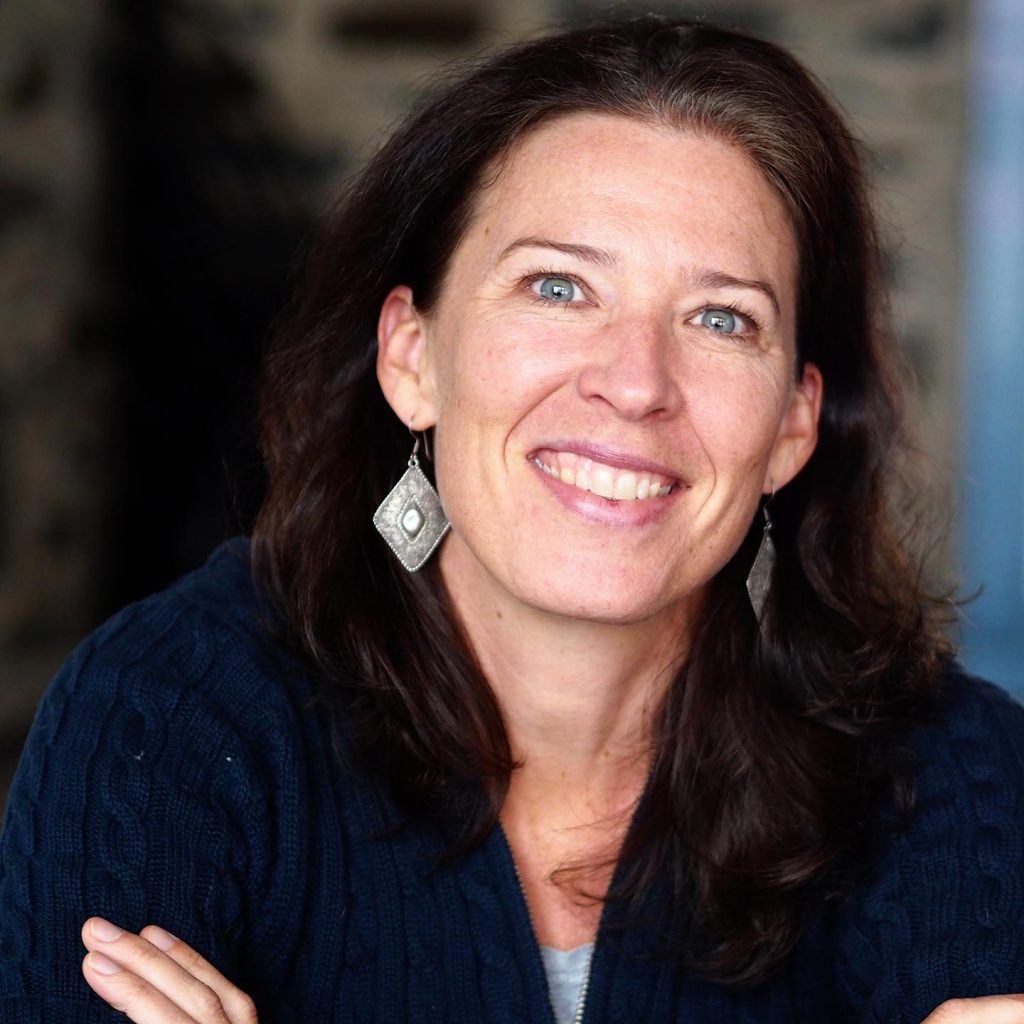All-Encompassing and Colorful
April 13th, 2018 | SIT Study Abroad

SIT Study Abroad alum Katy Rudder’s experience in Nepal and India inspired a career in development
These days, Katy Rudder helps people tell their stories. Much of her own story begins with SIT’s experience-based learning.
Studying with SIT in 1992 was Katy’s first time outside the United States. She went as part of SIT Study Abroad’s Tibetan Studies program focusing on the culture of Tibetan refugees in Nepal and India. The Denison University student from Chattanooga, Tenn., ended up with what she describes as an all-encompassing and colorful semester, including a homestay with a Tibetan refugee family in Kathmandu, Nepal.
“The mother was a nurse, so we lived in a residential block for hospital employees,” says Katy. “It was the mother, father, and three kids in one room, and the grandparents and I in another.”
She remembers well the household’s morning rituals. “I’d wake up, and the family would light butter lamps. The father would have his Tibetan prayer book, and he was chanting and meditating, all while the kids were playing and jumping all around him.”
Katy and the other SIT participants also met the Dalai Lama and other religious figures during their study of Tibetan culture. The academic and cultural experiences of her SIT semester proved transformative. “It made me feel like I was challenged and growing,” she says.
“Going abroad with SIT was one of those moments where you’re really engaged with the experience and all the sensations,” she explains. “It’s that intense cultural exchange moment where you’re outside your element.”
Those moments prompted self-examination. “I was just a regular kid, feeling like I had no skills, no talents. I realized I do well, I thrive, in unusual environments.”
Katy did an Independent Study Project in Darjeeling, India, where she looked at the interaction of refugee and non-refugee Tibetan populations. Her experiences led her to a new career path. “I thought, what an amazing life to do development work. Let me see if I have what it takes to be in the Peace Corps.”
At 21, she became the youngest member of her class of Peace Corps volunteers, the first group to go to China. In Szechuan, she taught English at a teacher’s college for two years.
Her love of intercultural experience eventually took her back to school, where she did a graduate degree in cultural applied anthropology, and then a degree in public administration. In grad school, she met her husband. They both worked in the Balkans, where Katy was a community organizer, then with NGOs in Sierra Leone, Jordan, and Sudan.
“We finally ended up in Zimbabwe. It’s a real expatriate secret – a great place you don’t want to leave.” There, Katy’s husband works for Cultivating New Frontiers in Agriculture and she freelances as a consultant, helping NGOs, as she says, “tell their stories.”
All of it comes back to the kind of intercultural exchange Katy first found with SIT. “As a kid, I didn’t have a lot of experience interacting with people different from me. SIT offered me an intense and very positive experience of learning about different people, about every little thing they did that was different.
“You learn pretty quickly we’re all humans, all people,” Katy said. “There’s a lot we share as humans despite all our interesting diversity.”
Her role became clear. “I realized I wanted to be an ambassador back to my own people, to say don’t be afraid – we’re actually very similar. There’s no reason to put up walls.”
